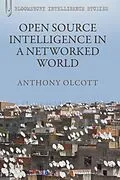The amount of publicly and often freely available information is staggering. Yet, the intelligence community still continues to collect and use information in the same manner as during WWII, when the OSS set out to learn as much as possible about Nazi Germany and Imperial Japan by scrutinizing encyclopedias, guide books, and short-wave radio. Today, the supply of information is greater than any possible demand, and anyone can provide information. In effect, intelligence analysts are drowning in information. The book explains how to navigate this rising flood and make best use of these new, rich sources of information. Written by a pioneer in the field, it explores the potential uses of digitized data and the impact of the new means of creating and transmitting data, recommending to the intelligence community new ways of collecting and processing information. This comprehensive overview of the world of open source intelligence will appeal not only to practitioners and students of intelligence, but also to anyone interested in communication and the challenges posed by the information age.
Autorentext
Inhalt
Foreword / Part I: When "Information Retrieval System" Meant the Memory of the Oldest Employee/ Chapter One: The Screwballs of K Street and the Four-Eyes Brigade/ Chapter Two: Intelligence Analysis and Open Sources - The Early Days/ Chapter Three: "Not Indigestion But Gluttony/ Part II: The "Information Iceberg" Tips Over/ Chapter Four - Collecting Puzzle Pieces While Mysteries Abound/ Chapter Five: Six Qualities of Information.../ Chapter Six: So What? Addressing the Signal-to-Noise Problem/ Part III: So What Now?/ Chapter Seven: Improving Information "Food Searches" / Chapter Eight: Narratives of Persuasion and the Battle for Attention / Chapter Nine: A World Awash in Images /
Conclusion / Chapter Ten: Don't Be Surprised By Surprise
